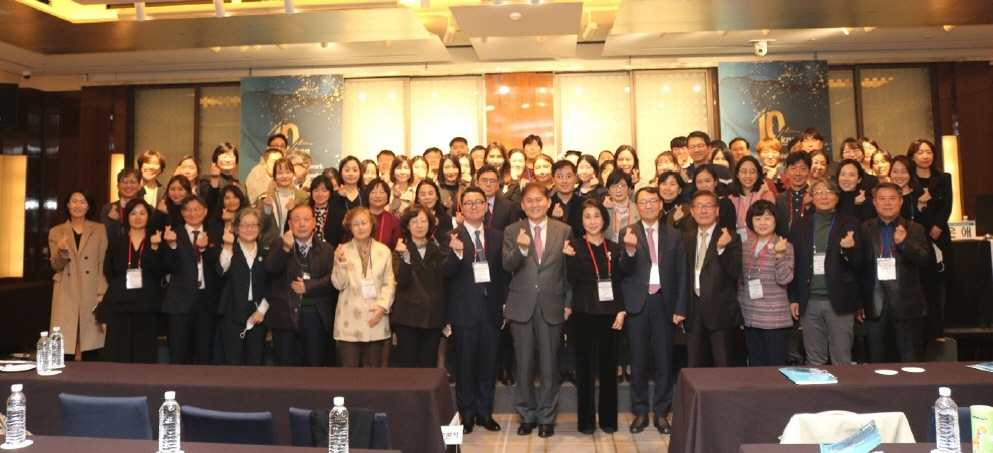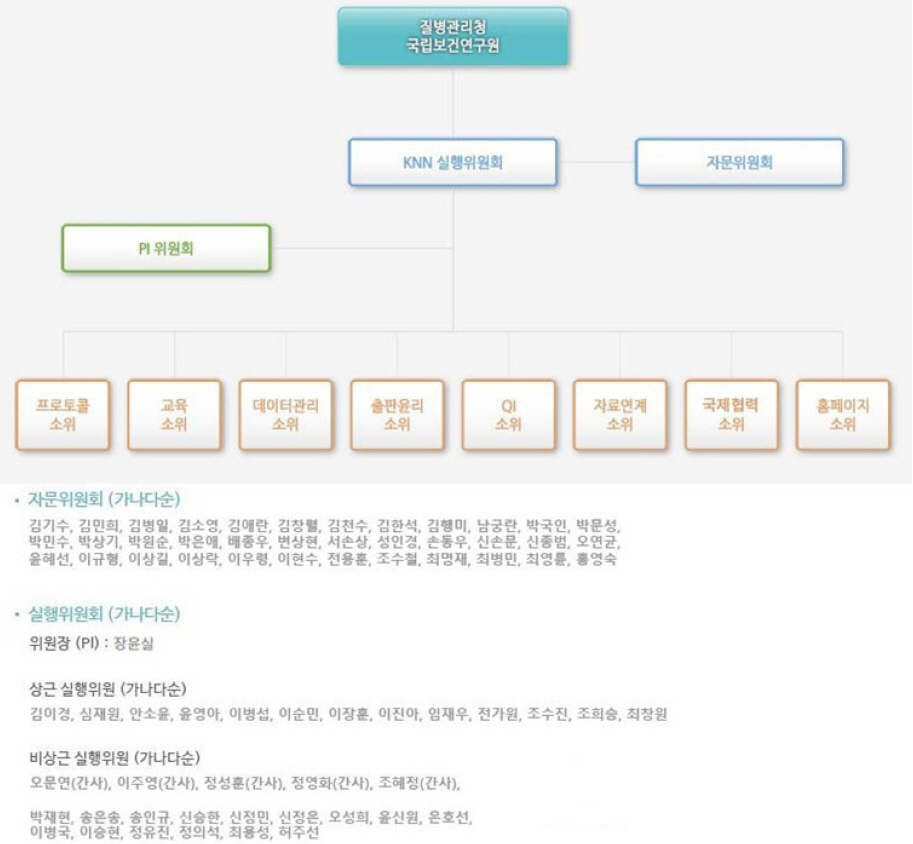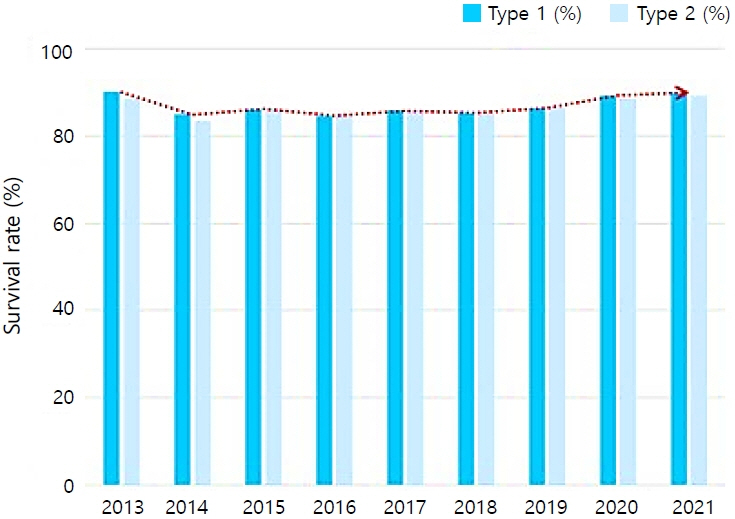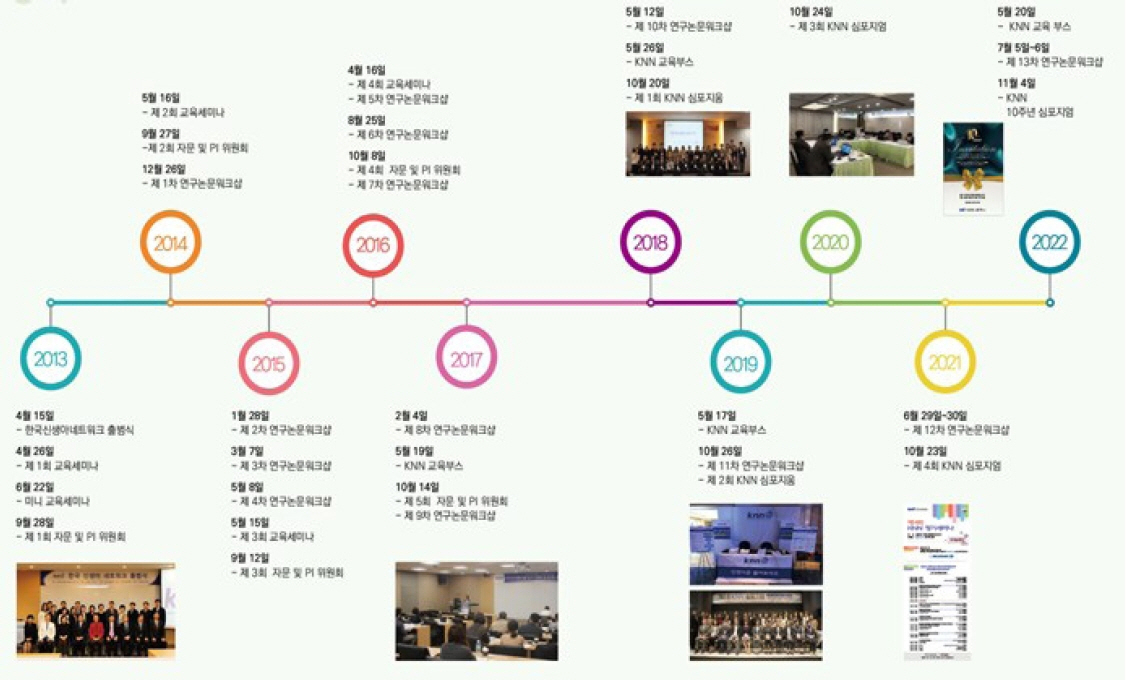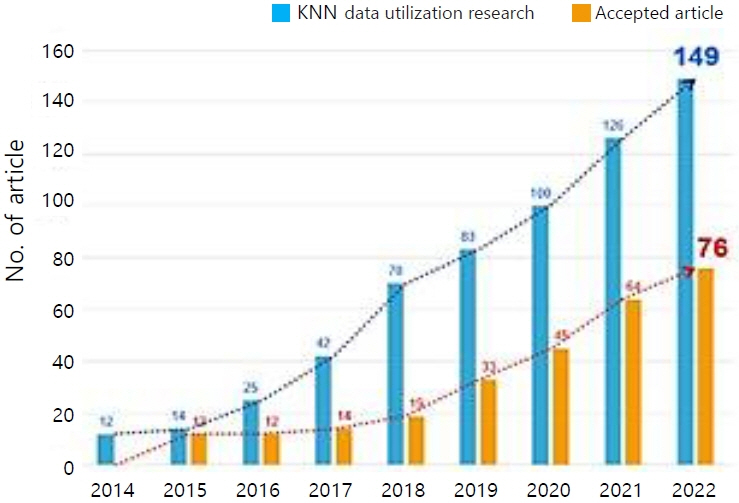Neonatal Med.
2023 Feb;30(1):1-9. 10.5385/nm.2023.30.1.1.
On the 10th Anniversary of the Korean Neonatal Network
- Affiliations
-
- 1Department of Pediatrics, Samsung Medical Center, Sungkyunkwan University School of Medicine, Seoul, Korea
- 2Cell and Gene Therapy Institute, Samsung Medical Center, Seoul, Korea
- 3Department of Health Sciences and Technology, Samsung Advanced Institute for Health Sciences & Technology, Sungkyunkwan University, Seoul, Korea
- KMID: 2540093
- DOI: http://doi.org/10.5385/nm.2023.30.1.1
Abstract
- The Korean Neonatal Network (KNN), which is celebrating its 10th anniversary, currently has more than 100 staff and researchers from >70 neonatal intensive care units nationwide in Korea. More than 85% to 90% of the population of very low birth weight infants in Korea are registered yearly, and more than half are followed up for up to 3 years at the KNN. A total of >19,000 cases have been accumulated through a strict data quality management process of the KNN. Based on this, >100 research projects have been proposed, >70 peer-reviewed papers have been published in leading international journals, and the cornerstone of the quality improvement project has been launched. In addition, we recently expanded the number of subjects for registration to very premature infants <32 weeks of age and continue to provide essential evidence data for establishing national health policies, such as linking with government policy projects of the Ministry of Health and Welfare for preterm infants. In such manner, the KNN is confident to be successfully and actively moving toward reaching the ultimate goal of standardizing neonatal intensive care and management of preterm infants in Korea by providing essential data for national health policy establishment along with quality improvement through evidence-based interactive data.
Figure
Reference
-
1. Chang YS, Park HY, Park WS. The Korean Neonatal Network: an overview. J Korean Med Sci. 2015; 30 Suppl 1:S3–11.2. Chang YS, Ahn SY, Park WS. The establishment of the Korean Neonatal Network (KNN). Neonatal Med. 2013; 20:169–78.3. Lee SM, Chang YS, Park WS; Korean Neonatal Network. International perspectives: implementation of the Korean Neonatal Network. Neoreviews. 2019; 20:e177–88.4. Choi CW, Park MS. Data management and site-visit monitoring of the multi-center registry in the Korean Neonatal Network. J Korean Med Sci. 2015; 30 Suppl 1:S19–24.5. Lee BS, Moon WH, Park EA. Real-time data display system of the Korean Neonatal Network. J Korean Med Sci. 2015; 30 Suppl 1:S12–8.6. Lee JH, Noh OK, Chang YS; Korean Neonatal Network. Neonatal outcomes of very low birth weight infants in Korean Neonatal Network from 2013 to 2016. J Korean Med Sci. 2019; 34:e40.7. Jeon GW, Lee JH, Oh M, Chang YS. Serial long-term growth and neurodevelopment of very-low-birth-weight infants: 2022 update on the Korean Neonatal Network. J Korean Med Sci. 2022; 37:e263.8. Hahn WH, Chang JY, Chang YS, Shim KS, Bae CW. Recent trends in neonatal mortality in very low birth weight Korean infants: in comparison with Japan and the USA. J Korean Med Sci. 2011; 26:467–73.9. Korean Statistical Information Service. Birth statistics [Internet]. Daejeon: KOSIS; 2023 [cited 2023 Feb 22]. Available from: https://kosis.kr.10. Shim JW, Kim MJ, Kim EK, Park HK, Song ES, Lee SM, et al. The impact of neonatal care resources on regional variation in neonatal mortality among very low birthweight infants in Korea. Paediatr Perinat Epidemiol. 2013; 27:216–25.11. Choi CW, Kim BI, Kim EK, Song ES, Lee JJ. Incidence of bronchopulmonary dysplasia in Korea. J Korean Med Sci. 2012; 27:914–21.12. Korean Neonatal Network. Korean Neonatal Network [Internet]. Seoul: KNN;2023 [cited 2023 Feb 22]. Available from: www.knn.or.kr.13. Youn Y, Lee SM, Hwang JH, Cho SJ, Kim EK, Kim EA, et al. National registry data from Korean Neonatal Network: two-year outcomes of Korean very low birth weight infants born in 2013-2014. J Korean Med Sci. 2018; 33:e309.14. Lee JH. Contest for institutions to carry out pilot project for continuous management of premature babies [Internet]. Seoul: Medical Today; 2021 [updated 2021 Dec 10]. Available from: https://mdtoday.co.kr/news/view/1065595221737553.15. Choi EJ. Policy Report of 2021-26: Establishing a statistical management system for preterm infants. Sejong: Ministry of Health and Welfare;2021.16. Shah PS, Lui K, Reichman B, Norman M, Kusuda S, Lehtonen L, et al. The International Network for Evaluating Outcomes (iNeo) of neonates: evolution, progress and opportunities. Transl Pediatr. 2019; 8:170–81.
- Full Text Links
- Actions
-
Cited
- CITED
-
- Close
- Share
- Similar articles
-
- Neonatal Research Network of Japan and Neonatal Database
- For the Commemoration of the 20th Anniversary of the Korean Society of Neonatology
- 10th Anniversary of Clinical Endoscopy
- In commemoration of Pediatric Emergency Medicine Journal 10th anniversary
- National Academy of Medicine of Korea Celebrates Its 10th Anniversary

